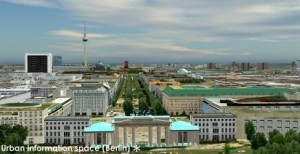Virtual 3D city models are getting more complex, detailed, and increasingly large. Therefore, good solutions for the storage and the management of 3D city models are needed. Within this context we want to inform you that there is now a 3D database schema for the storage and management of CityGML-based 3D city models freely available, which can be implemented on top of Oracle 10G/11G. It also works with the Express version of both databases, which is free for use for educational and research purposes. The following is a rough translation of the German press release.
Press release, 27th April 2009.
The departement for Geodesy and Geoinformation Science, Berlin Institute of Technology, German has realesed free software tools for the management and storage of CityGML-based virtual 3D city models. The tools include a 3D database schema for the use with Oracle 10G R2 or 11G, an Importer/Exporter, and a Java class library for facilitating the work with CityGML. The package is released under the Lesser GNU Public License v3 and can be downloaded under the following URL: www.igg.tu-berlin.de/software. An English documentation is also available.
The CityGML-based 3D database was developed during the creation of the official 3D city model of Berlin and is successfully used for the storage and management of the city-wide virtual 3D city model. More information about the city model of Berlin as well as a Google Earth enabled version can be found under: www.virtual-berlin.de.



